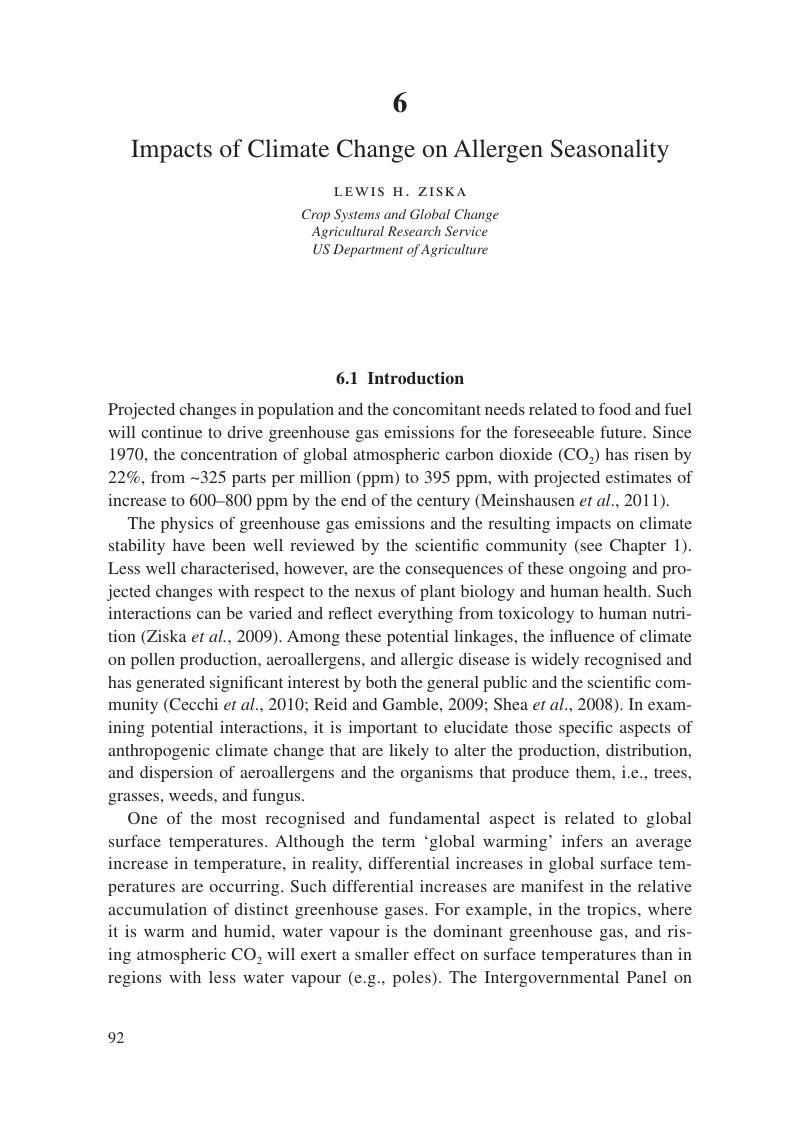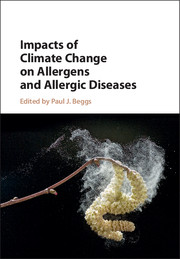Book contents
- Impacts of Climate Change on Allergens and Allergic Diseases
- Impacts of Climate Change on Allergens and Allergic Diseases
- Copyright page
- Dedication
- Dedication
- Contents
- Figures
- Tables
- Contributors
- Preface
- Acknowledgements
- Acronyms and Abbreviations
- 1 Introduction
- 2 Impacts of Climate Change on Aeroallergen Production and Atmospheric Concentration
- 3 Impacts of Climate Change on the Distributions of Allergenic Species
- 4 Impacts of Climate Change on Aeroallergen Dispersion, Transport, and Deposition
- 5 Impacts of Climate Change on Allergenicity
- 6 Impacts of Climate Change on Allergen Seasonality
- 7 Impacts of Climate Change on Indoor Allergens
- 8 Interactions among Climate Change, Air Pollutants, and Aeroallergens
- 9 Impacts of Climate Change on Allergic Diseases
- 10 Synthesis and Conclusion
- Index
- References
6 - Impacts of Climate Change on Allergen Seasonality
Published online by Cambridge University Press: 05 August 2016
- Impacts of Climate Change on Allergens and Allergic Diseases
- Impacts of Climate Change on Allergens and Allergic Diseases
- Copyright page
- Dedication
- Dedication
- Contents
- Figures
- Tables
- Contributors
- Preface
- Acknowledgements
- Acronyms and Abbreviations
- 1 Introduction
- 2 Impacts of Climate Change on Aeroallergen Production and Atmospheric Concentration
- 3 Impacts of Climate Change on the Distributions of Allergenic Species
- 4 Impacts of Climate Change on Aeroallergen Dispersion, Transport, and Deposition
- 5 Impacts of Climate Change on Allergenicity
- 6 Impacts of Climate Change on Allergen Seasonality
- 7 Impacts of Climate Change on Indoor Allergens
- 8 Interactions among Climate Change, Air Pollutants, and Aeroallergens
- 9 Impacts of Climate Change on Allergic Diseases
- 10 Synthesis and Conclusion
- Index
- References
Summary

- Type
- Chapter
- Information
- Impacts of Climate Change on Allergens and Allergic Diseases , pp. 92 - 112Publisher: Cambridge University PressPrint publication year: 2016
References
- 9
- Cited by



